The Reading Everest Project
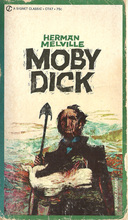
Welcome to Reading Everest.
No doubt some of you have seen and are perhaps even faithful fans of other blogs and web sites about books. Certainly there is no shortage of them, so today I’ll explain what I intend to do and why, in hopes of distinguishing this blog from the hundreds -- thousands, more likely -- of others written by bibliophiles.
At the Reading Everest blog, I’m going to write about tackling some of the longest, most difficult novels ever written -- books that fall into the category of classics that everyone knows about, but few actually read. And though I don’t regard Herman Melville’s “Moby Dick” as particularly difficult, “Reading Everest” will commence with, for reasons I’ll explain later, a voyage to sea with Ishmael, Starbuck and Ahab.
Perhaps some of you have seen blogs where the writer sets out to conquer “Ulysses,” slog through “War and Peace,” or reach the dizzying summit of “In Search of Lost Time.”
No doubt some of you have seen and are perhaps even faithful fans of other blogs and web sites about books. Certainly there is no shortage of them, so today I’ll explain what I intend to do and why, in hopes of distinguishing this blog from the hundreds -- thousands, more likely -- of others written by bibliophiles.
At the Reading Everest blog, I’m going to write about tackling some of the longest, most difficult novels ever written -- books that fall into the category of classics that everyone knows about, but few actually read. And though I don’t regard Herman Melville’s “Moby Dick” as particularly difficult, “Reading Everest” will commence with, for reasons I’ll explain later, a voyage to sea with Ishmael, Starbuck and Ahab.
Perhaps some of you have seen blogs where the writer sets out to conquer “Ulysses,” slog through “War and Peace,” or reach the dizzying summit of “In Search of Lost Time.”

The difference here is that I’m going to read all of them -- plus several others. I began Tuesday, settling down around 9 o:clock, on the first day of September, a faint chorus of crickets outside my office window, and by the time I retired, Ishmael and I had survived the cold winter’s night tucked under a blanket with the cannibal Queequeg at the Spouter Inn.
The motivation behind Reading Everest will be spelled out later in more detail, but for now it is sufficient to say that the focus will be on reading these enormous books in the context of a world where the Internet and other media has served to reduce our collective and individual attention spans to that of a gnat.
Bound up with that is another issue, an ominous one: the question, incredibly, of whether books themselves are to go the way of the stone tablet and scroll as we clear room for the more “convenient” Kindle, or maybe some yet-to-be-invented technology that lets us download -- or would it be upload? -- books into our brains.
The motivation behind Reading Everest will be spelled out later in more detail, but for now it is sufficient to say that the focus will be on reading these enormous books in the context of a world where the Internet and other media has served to reduce our collective and individual attention spans to that of a gnat.
Bound up with that is another issue, an ominous one: the question, incredibly, of whether books themselves are to go the way of the stone tablet and scroll as we clear room for the more “convenient” Kindle, or maybe some yet-to-be-invented technology that lets us download -- or would it be upload? -- books into our brains.

On a more personal level, this is a project to take on as I face the delightful prospect in the coming years of teaching a child, my 5-month-old boy, to read.
It is this broader context that will be as much a topic of discussion as the novels. Here, one will find not simply a journal of my reading adventures and weekly page counts, but also reportage and commentary on the world of reading, language and learning.
I’ll spare you the mental process that played out with Proustian complexity as I settled on the books for what I initially decided will be a 500-day reading marathon, with Sept. 1, 2009 being Day One. A somewhat arbitrary and gimmicky deadline, to be sure, but one that would have had me finished by my son’s second birthday. Since my son just had his fourth birthday, I’m clearly behind. But I’m still reading.
It is this broader context that will be as much a topic of discussion as the novels. Here, one will find not simply a journal of my reading adventures and weekly page counts, but also reportage and commentary on the world of reading, language and learning.
I’ll spare you the mental process that played out with Proustian complexity as I settled on the books for what I initially decided will be a 500-day reading marathon, with Sept. 1, 2009 being Day One. A somewhat arbitrary and gimmicky deadline, to be sure, but one that would have had me finished by my son’s second birthday. Since my son just had his fourth birthday, I’m clearly behind. But I’m still reading.
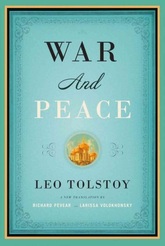
Suffice to say, I started with a list of about 50 novels, and my goal is to read, at the very least, the following seven -- or dozen, depending on how you count them. For those interested in such things, the books amount to 8,879 pages (the question of whether to include title pages and the blank page occasionally separating them from the first page of text is one of the more ridiculous considerations that arose during the selection process) and on my bookshelf they fill slightly more than 20 inches. Six countries are represented: The United States, France, Britain, Ireland, Russia and Japan; three were translated from a language other than English. With the exception of the first, I’ll read them in chronological order.
I begin with Herman Melville’s “Moby Dick.” It was the favorite novel of a favorite teacher I had once. Alas, his powers of persuasion were not absolute, and so I confess now that I never actually read it all the way through. A bit of unfinished business, you might say.
I begin with Herman Melville’s “Moby Dick.” It was the favorite novel of a favorite teacher I had once. Alas, his powers of persuasion were not absolute, and so I confess now that I never actually read it all the way through. A bit of unfinished business, you might say.
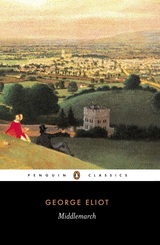
After my whaling adventures, I’ll dive into what is apparently regarded by some as the first novel, the great Japanese epic “The Tale of Genji,” translated by Royall Tyler.
That’s followed by “Clarissa, or, The History of a Young Lady,” by Samuel Richardson, possibly the heaviest Penguin paperback that’s ever squatted on a bookshelf, and also regarded as the first epistolary novel.
A rather obvious choice follows: Leo Tolstoy’s “War and Peace,” the quintessential novel that everyone knows, many allude to, few discuss, and even fewer actually read. I’m using the most recent translation, by Richard Peavar.
James Joyce’s “Ulysses” has a similar reputation, of course, though not so much for its length (as is the case with Tolstoy) as for the supreme difficulty of its prose.
That’s followed by “Clarissa, or, The History of a Young Lady,” by Samuel Richardson, possibly the heaviest Penguin paperback that’s ever squatted on a bookshelf, and also regarded as the first epistolary novel.
A rather obvious choice follows: Leo Tolstoy’s “War and Peace,” the quintessential novel that everyone knows, many allude to, few discuss, and even fewer actually read. I’m using the most recent translation, by Richard Peavar.
James Joyce’s “Ulysses” has a similar reputation, of course, though not so much for its length (as is the case with Tolstoy) as for the supreme difficulty of its prose.
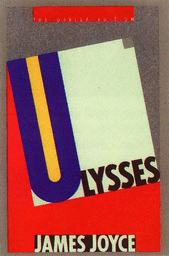
“Middlemarch” by George Eliot comes next, a novel that distinguished itself in my life some years ago by brewing a fatal mix of apathy and rebellion in my office reading group that ultimately led to its demise. Not with a bang, fortunately, but with a whimper.
And finally, putting aside Shakespeare’s plays, the Mount Everest (or maybe Death Valley?) of Western literature, “In Search of Lost Time,” by Marcel Proust. Depending on the edition, it runs six or seven thick volumes. The critically acclaimed Penguin edition -- which has an interesting publishing history I’ll discuss later -- fills six, with “The Prisoner” and “The Fugitive” comprising a single volume.
And finally, putting aside Shakespeare’s plays, the Mount Everest (or maybe Death Valley?) of Western literature, “In Search of Lost Time,” by Marcel Proust. Depending on the edition, it runs six or seven thick volumes. The critically acclaimed Penguin edition -- which has an interesting publishing history I’ll discuss later -- fills six, with “The Prisoner” and “The Fugitive” comprising a single volume.
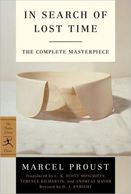
Full disclosure: A friend advised against including Proust, believing it will spell doom for “Reading Everest.” But I’ve got to read it. A year or two ago I read 40 pages or so in the first volume, “Swann’s Way,” and was astounded by the exquisite beauty and elegant architecture of the prose … before I was distracted and moved on to other things.
Make no mistake, I want to read it, as I do all the others -- even “Middlemarch,” which I recall throwing down a few years ago after reading not even two pages, regarding the prose as virtually impregnable, and declaring: “I can’t read this.” This is no forced march. I bought the books, made my local mail carrier lug these things to my house, and years from now, when my son asks, “Dad, have you read those?” I want to be able to say, confidently and honestly, that I have indeed read them.
Hopefully, someday, he will too.
Make no mistake, I want to read it, as I do all the others -- even “Middlemarch,” which I recall throwing down a few years ago after reading not even two pages, regarding the prose as virtually impregnable, and declaring: “I can’t read this.” This is no forced march. I bought the books, made my local mail carrier lug these things to my house, and years from now, when my son asks, “Dad, have you read those?” I want to be able to say, confidently and honestly, that I have indeed read them.
Hopefully, someday, he will too.
